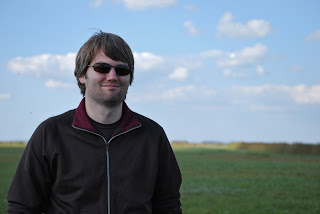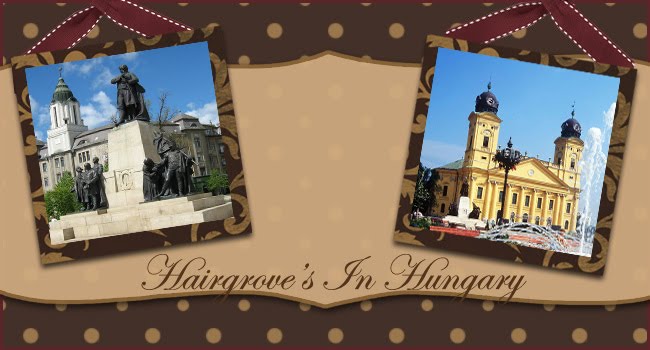 |
| Realizing we are in the middle of nowhere. |
 |
| Hay stacks on the horizon. |
 |
| About to get on our "hay ride" through the national park. |
 |
| A different kind of "horse-power." |
 |
| Fields as far as the eye can see. |
 |
| Fuzzy pigs and donkeys enjoying some food. |
 |
| No these are not Texas Long Horn, but Hungarian Grey Cattle. |
 |
| Fuzzy little sheep with twisty horns. |
 |
| A man wearing traditional clothing (no that is not a skirt, but really baggy pants). |
 |
| Ben enjoying the view. |
 |
| The horses are trained to lay down, while the men crack the whip above them. (The horse was enjoying this and eating grass actually.) |
 |
| The horses were trained to do this to hide in the grass. |
 |
| Can your horse sit like a dog? This one can! |
 |
| Enjoying the sites. |
 |
| Ben's thinking: "How can I do that with my future horses?" |
 |
| Man riding with 5 horses. They can do up to 16 at one time! |
 |
| Is this their version of skiing? |
 |
| He must have very strong leg muscles! |
 |
| Riding my first Hungarian horse... |
 |
| and hoping I don't get thrown off. :) |
 |
| The horses of the Hortobagy National Park. |


Hey guys!
ReplyDeleteI just found your blog and I'm enjoying it. I love seeing what all the other CETPers are up to. Those horses looked hysterical, I'm going to have to go and see that.
Alex Hoskinson
I suspect that the horses were originally trained to lie down to enable better ambush technique. Ie, by hiding in the grass rather than in a distant forest your enemy will wander closer to you before detecting your presence thus their chance of escape is lower, especially with their equivalent to the Mongolian bow is is the most powerful bow invented. Only 1 man left in China who still makes these curved bows & he is old & no one is learning this almost extinct process. :(
ReplyDeleteProcess takes approx 12 months to complete.
Hungarian Grey Cattle
ReplyDeleteThe Hungarian grey cattle breed is a true Hungaricum, an indigenous, legally protected lovestock of Hungary. It is one of the most famous hungarian features of the whole world. Traditional herding technology - an extensive goulash keeping and cultural heritage built on hundreds of years of tradition is combined with a certificate of origin that meets the expectations of the age.
Let’s taste the originally Hungarian Grey Cattle organic meat from the heart of Europe.The Hungarian Grey Cattle Breeders Association was founded as the first civil organization in Hungary.The association then started to grow rapidly,now it has a nationwide size of hundreds of active members.The aim of the association is to breed, protect, distribute, open market,present and develop valuable and useful properties of the Hungarian grey cattle breed according to the rules of preservation of gene reserves. The variety is considered a national value, Hungarian Grey Cattle whose pure maintenance is in the interest of the future.
ReplyDeleteThe Hungarian grey cattle breed is a true Hungaricum, an indigenous, legally protected lovestock of Hungary. It is one of the most famous hungarian features of the whole world. Traditional herding technology - an extensive goulash keeping and cultural heritage built on hundreds of years of tradition is combined with a certificate of origin that meets Hungarian Grey Cattle the expectations of the age.
ReplyDeleteThe Hungarian grey cattle breed is a true Hungaricum, an indigenous,legally protected lovestock of Hungary. It is one of the most famous hungarian features of the whole world. Traditional herding technology-an extensive goulash keeping and cultural heritage built on hundreds of years of tradition is combined with a Hungarian Grey Cattle certificate of origin that meets the expectations of the age.
ReplyDelete